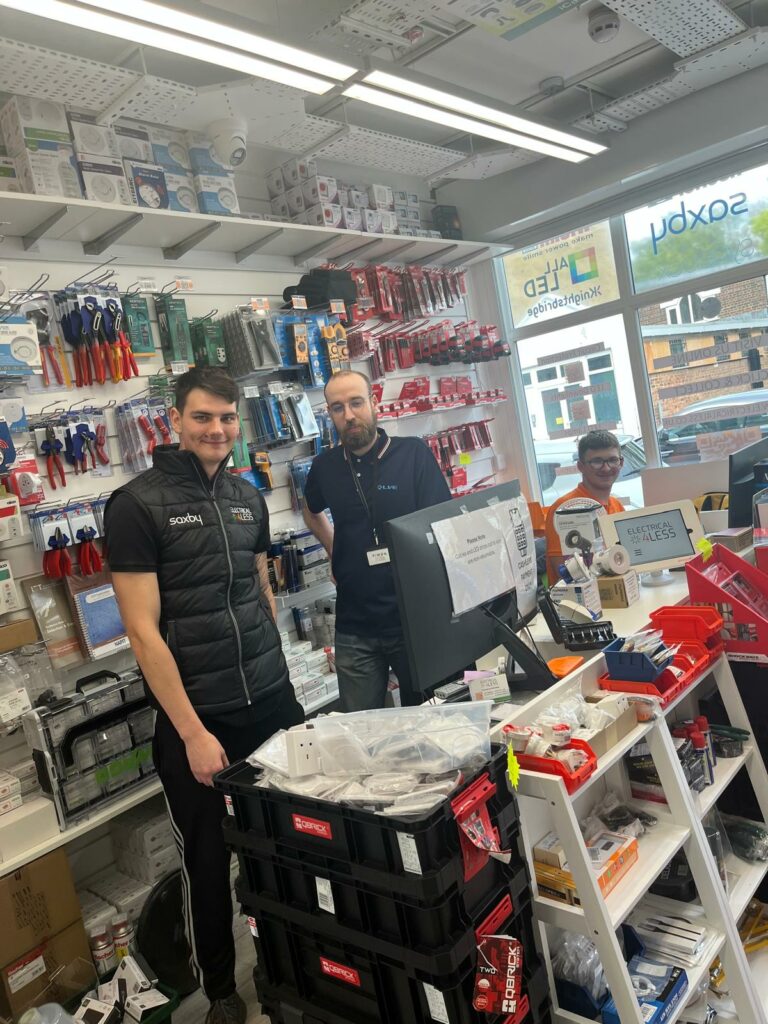Table of contents
- 1. What Are SWA Cable Glands? | SWA Cable Glands Guide
- 2. BW vs CW – Explained in This SWA Cable Glands Guide
- 3. Gland Sizes – What Do 20S, 20, and 20L Mean?
- 4. SWA Cable vs Gland Size Reference
- 5. → LSF vs LSZH in SWA Cable Glands – Material Guide for Safer Installs
- 6. IP Ratings – What to Expect?
- 7. History of Armoured Cable Glands | SWA Cable Glands Explained
- ✅ Recommended Brands at Electrical4Less
- ❓ Frequently Asked Questions – SWA Cable Glands
- Follow Electrical4Less
- Explore More
1. What Are SWA Cable Glands? | SWA Cable Glands Guide
Welcome to our SWA cable glands guide — your complete reference for understanding and choosing the right armoured cable glands. Whether you’re a professional installer or a first-time buyer, this comprehensive guide to SWA armoured cable glands will help you confidently choose between BW and CW types, understand sizing, sealing, and safety standards.
2. BW vs CW – Explained in This SWA Cable Glands Guide
- BW glands: Designed for indoor dry environments. They secure the armour but do not seal the outer sheath. Despite the name, the “W” historically stood for Brass Weather, but modern BW types are not weatherproof.¹
- CW glands: Designed for external and wet environments. These include a compression ring and outer seal that grips the sheath, ensuring IP66 or higher protection.²
Key Tip: Never use BW outdoors or try to improvise weatherproofing with sealants.
3. Gland Sizes – What Do 20S, 20, and 20L Mean?
- 20S – For smaller cable ODs like 1.5–2.5mm²
- 20 – Standard 2.5–4mm² cables
- 20L – Same thread as 20 but longer length for thicker enclosures or boards³
Size always depends on your outer sheath diameter, not just the conductor size.
4. SWA Cable vs Gland Size Reference
| Cable Size | Approx. OD | Suggested Gland Size |
|---|---|---|
| 1.5mm² | ~10mm | 20S |
| 2.5mm² | 12–14mm | 20 or 20S |
| 4mm² | ~14.5mm | 20 |
| 6mm² | 16–17mm | 20 or 25 |
| 10mm² | ~20mm | 25 |
| 16mm² | ~24mm | 25 or 32 |
| 25mm² | ~28mm | 32 |
Always measure and cross-check with the manufacturer before installing.⁴
5. → LSF vs LSZH in SWA Cable Glands – Material Guide for Safer Installs
Most SWA glands are made from CuZn39Pb3 brass, valued for its durability, conductivity, and corrosion resistance.⁵ Reputable manufacturers offer nickel-plated options for added longevity.
Shrouds
- PVC – Standard
- LSF – Low Smoke & Fume
- LSZH – Low Smoke Zero Halogen – vital in tunnels, hospitals, and railways⁶
In sensitive areas, always use LSZH to meet safety and insurance standards.
6. IP Ratings – What to Expect?
- CW glands: IP66 or IP68 (with proper installation and sealing)⁷
- BW glands: IP30–IP54 (not suitable for rain, condensation, or outdoors)
Correct torque is critical. Don’t over-tighten or under-seal—use a torque chart where provided.
7. History of Armoured Cable Glands | SWA Cable Glands Explained
- 1906: First use of SWA cable in UK infrastructure⁸
- 1919: Wiska releases first commercial brass cable glands⁹
- 1925: Early thermoset plastic glands (e.g. Bakelite) introduced¹⁰
- 1950s–60s: CW compression glands become industry standard¹¹
Even now, many electricians still confuse the terms “BW” and “CW”. Getting it right means better safety and full compliance.
✅ Recommended Brands at Electrical4Less
We proudly supply:
- Wiska Armoured Cable Glands – Superior engineering with IP68 options
- Unicrimp SWA Glands – Affordable quality for everyday installs
- Browse All SWA Cable Glands
❓ Frequently Asked Questions – SWA Cable Glands
Absolutely. CW glands can be used anywhere. They offer better sealing and future-proofing, especially in damp or dusty garages, basements, or outhouses.
They do. In areas like stairwells, schools, and enclosed lofts, low smoke and low toxicity help reduce fire-related risk. It’s a smart upgrade even for minor jobs.
Incorrect sizing can lead to poor earthing or failed IP protection. This could invalidate insurance or cause costly failures. Always measure your cable sheath and consult a sizing chart.
If the gland is exposed to rain, condensation, or mechanical stress, yes, CW is essential. BW should never be used outside.
Follow Electrical4Less
Stay connected for deals, install demos, and trade tips:
Explore More
References
- Doncaster Cables – BW definition
- CMP Products – CW sealing info
- Wiska UK Sizing Sheet
- NICEIC Installer Handbook
- CDA – Properties of Brass
- BS7671 & LSZH guidance (IET)
- RS Components – IP66/IP68 specs
- Engineering Archives UK – SWA
- Wiska Historical Timeline
- Bakelite Gland Museum Listing
- BS6121 adoption in mid-century specs











Ultimate SWA Cable Glands Guide – BW vs CW, Sizes, History & Fire Safety Options